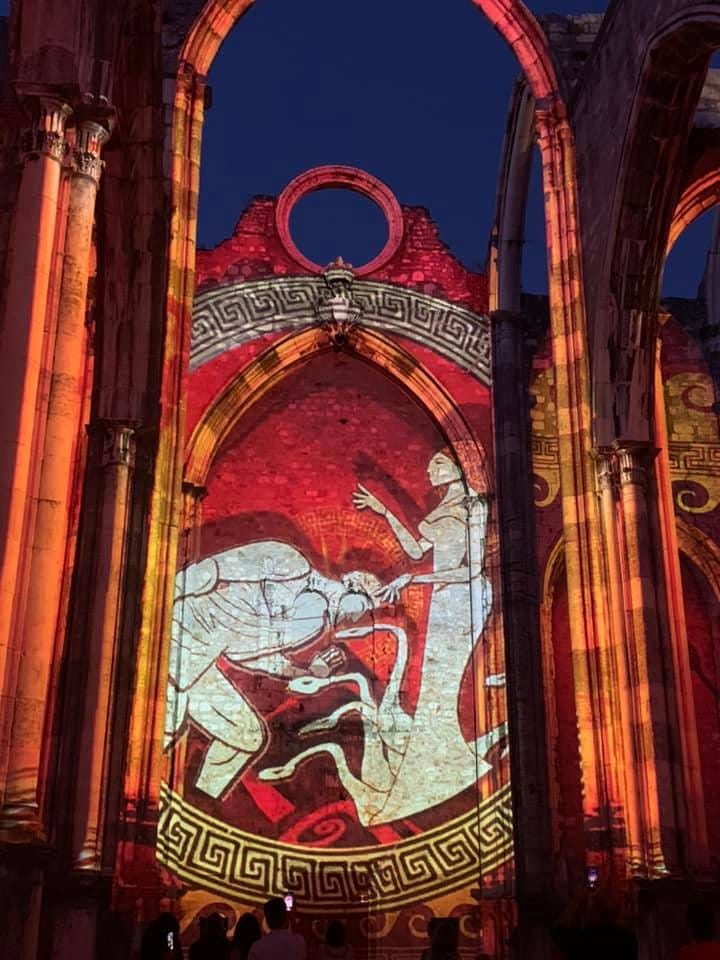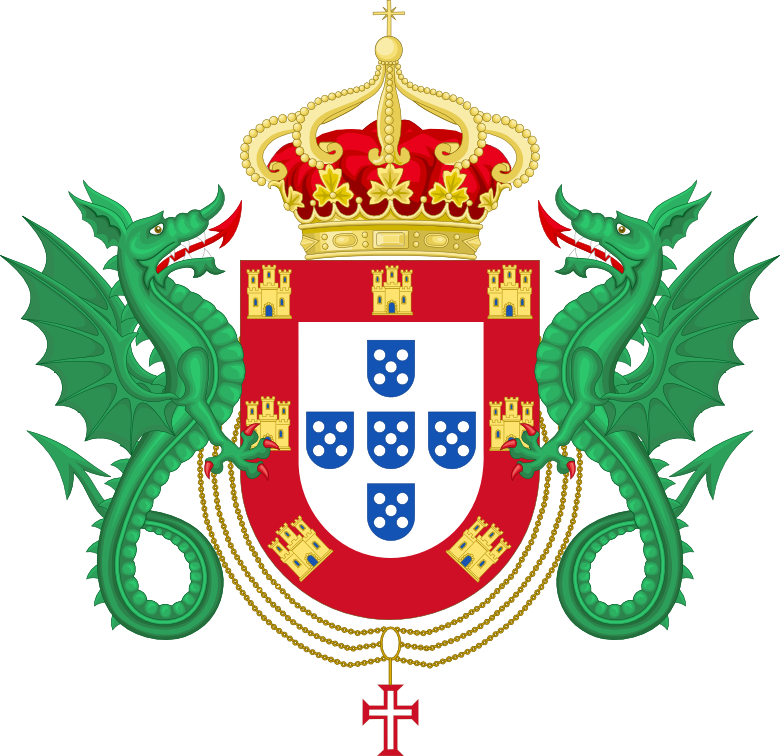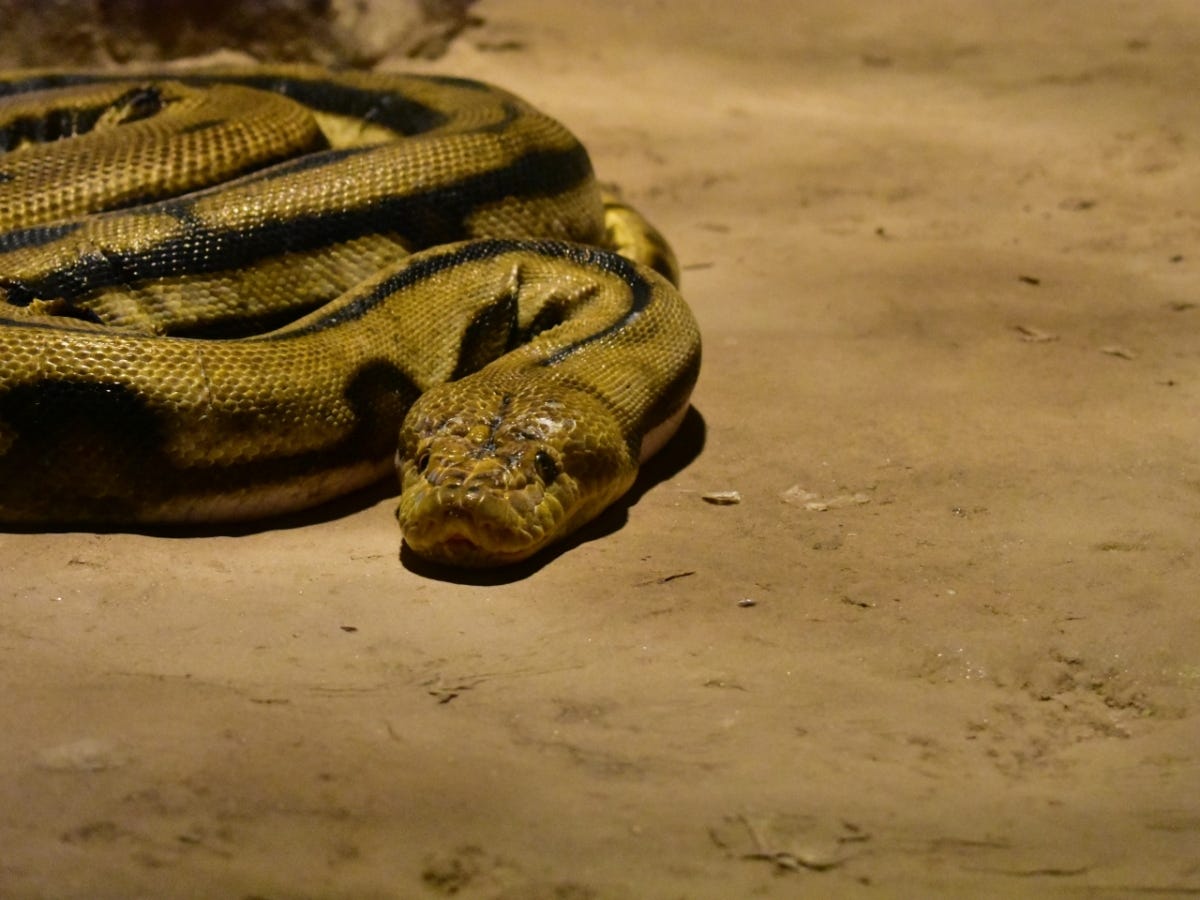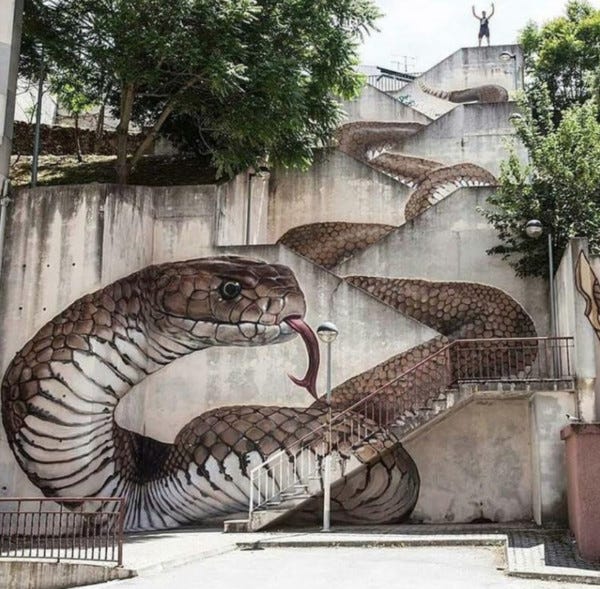Of the Secrets of Fatima, the serpent knew nothing. It’s one of the mysteries of Portugal, whatever you may think about it. And so is the serpent, but that’s not so well known. As for Fatima’s secrets, there was one nut who was so obsessed with the ‘third secret’ that on 2nd May 1981, he, an ex Trappist monk called Laurence Downey, hijacked the Dublin London Aer Lingus flight. He demanded that Pope John Paul II reveal the secret. So he doused himself in petrol, went into the cockpit with a lighter, and forced the plane to land at Le Touquet, Normandy. It happened that the Irish Dog Food factory owner, the then Minister for Transport in Ireland, (later Taoiseach) Albert Reynolds was on the plane. Afterward the hijack he was asked by a British journalist with a posh accent, ‘What is the Third Secret of Fatima?’ and Reynolds responded‘Well, I don’t know! Nobody knows. That’s the point!’
Downey was a charismatic man who faced fraud charges for trying to raise to a mercenary army, yet he was doing the hijack unarmed. Colum Stapleton, who made the documentary ‘Holy Hijacker’, met an academic in Porto, called Fina D’Armada who gave him some detailed insight into the Fatima phenomenon: the Virgin had not appeared in blue and white as might be expected, but in a more ethereal, androgynous form.
Lucia Santos, the eldest of the trio of shepherds that saw the vision on 13 May 1917, had survived the Spanish Flu. She confided in the Virgin Mary that nobody had really believed in the apparition at all, so apparently Mary told her that she’d give the public something to believe on the 13th October 1917. Rain poured. Stapleton, who interviewed two witnesses to the actual vision of 1917, was told that purple and yellow lights had risen out of silver disc in the sky and the rain vanished and everybody was made dry. ‘The Church decided it was the sun leaving its orbit to stop the sinners’ says Stapleton.

Stapleton tells his take: ‘The universe is run by the Gods, who play with the Church, Lucia Santos, politics, along comes a hijacker, the Pope is in the mix, the Secrets of Fatima unfold, and down falls communism. In all of this, there must be something beyond, playing the whole show…’
The Catholics seem to regard the Hindus as pagans, perhaps because they are serpent-worshiping folk who revere nagas, serpents and because their god Shiva appears with a cobra wound around his shoulders and throat, (merely a reminder to keep the ego in check and also due to the fact that Shiva is also known as Nageshwar, Lord of the snakes). There are temples dedicated to this form of Shiva across all India. The three coils of the snake around Shiva’s neck symbolize the past, present and future – the cycles of life. The snake is the Vasuki Naga, a deadly cobra.

Yet, apparently Hindus have performed pujas at Fatima. A busload of Hindus (from Lisbon) were allowed to commandeer the sanctuary inside the Fatima Capelinha and to use the Catholic altar for their rituals. There was of course outrage. ‘Another Interfaith Outrage Blessed by Shrine Rector’ wrote John Vennari. The Hindu priest led the ceremony, and afterwards they were escorted by the Fatima authorities to see ‘a model of the huge, round-shaped modernistic shrine at Fatima now under construction, a fifty-million-dollar eyesore that will blot the landscape of Our Lady’s apparitions.’ Vennari reported that one of the Hindus is reported to have said that they went to Fatima because ‘there are many gods and the gods have wives and companions who will bring good luck. This is a blasphemy against the Queen of Heaven as it places Our Blessed Mother on the same level as some sort of “wife” of a false god.’ The Hindus had not come to partake in Catholic prayer but, how dare they, folded the holy event of Fatima into their own pagan myths.
Far indeed does the Virgin Mary seem from the Serpent, who has taunted good Christians since the Garden of Eden. Mary is often seen standing on a snake, an image that may have emerged from the Book of Genesis, where God says to the Snake:
And I will put enmity
between you and the woman,
and between your offspring and hers;
he will crush your head,
and you will strike his heel. (Genesis 3:15)
Not a very uplifting nor a very wise threat. Later, in the Book of Revelations : ‘And the great dragon was thrown down, that ancient serpent, who is called the Devil and Satan, the deceiver of the whole world . . . .’ Revelation 12:9
But the serpents and their worshippers are not so far from holy Portugal as might be thought. Ophiussa is the first name of Lisbon, the place where the ocean greets the Tagus river. In Greek, Ophiussa means Land of the Serpents. Why? Because it was ruled by a Queen who was half woman and half serpent, much like our Melusine. She was, like a nagin, enchanting, seductive, bewitching and had mellifluous voice like Medusa. She would climb hills and shout into the wind to hear her own voice, proclaiming she was the ruler, and no human should dare to trespass on her land. If they did, her serpents would choke them to death.
And so she ruled, until Odysseus came along, or Ulysses, as he is known to the Romans. He had arrived at this port of Ophiussa, a land ‘cursed by the Gods’, where no man had been. Any man who had gone near the place had been whittled away by this Serpent Queen, disappeared into her abyss. But Ophiussa quite liked Odysseus, who had also charmed Helen of Troy. She wanted to keep him in her lair. Oysseus let on he liked Ophiussa but was still smitten by his Penelope.
During his time in Ophiussa, Odysseus was overwhelmed with the natural beauty of the land and vowed to build a glorious city, the capital of the World, in his image. However, as soon as the ships were stocked and his men were well rested, he fled Ophiussa. The Queen chased after him and it is said that her arms turned into serpents and formed the eight hills of Lisbon as she chased after the Greek hero as he set out to sea.
All this was in vain because between the Cyclops, the cannibal giants, a six-headed monster, Zeus’s raft, Odysseus was the only one to eventually make it home. When the Romans took over the land from 205 BC, they renamed it Olisippo which the Moors then named Olisibona, which metamorphosed into Lisboa. Odysseus may have escaped the enchantment of Ophiussa, but the legend of the origin of this capital built on seven hills, has remained. Odysseus is remembered within Lisbon by a tower named Ulysses in the Castle of São Jorge in Lisbon.
It seems Ophiussa had offspring: the Ophi people lived inland in the mountains of North Portugal and Galicia, or in the estuaries of the Douro and Tagus rivers. They worshipped serpents. A Roman poet called Avienus wrote a poem called Ora Maritima, a poeticised account of the world’s coastal regions in which he referenced a tribe known as the Oestrimni who inhabited Portugal and Galicia, but who were chased away from their native land after an invasion of serpents, which could the Ophi people, who worshipped serpents. Some believe that the dragon represented in the old crest of the crown of the Kings of Portugal is influenced by the Ophi, as serpents and dragons are used interchangeably. The serpent’s venom has as fiery a quality as the dragon’s.
The Ophi people have also influenced several Portuguese fairy tales. The enchanted mouras, beautiful and seductive beings, appear in tales singing and combing their long beautiful hair, like mermaids. They are shape shifters who guard pathways, caves, rivers, castles and treasures.
Almost every old Portuguese town has a tale of an enchanted moura, many of whom possess the form of a serpent. The maiden-serpents are said to promise treasures to those who can set them free from their enchantment. Much like the Nagins of India. And Melusine, who promised her husband castles and fame, as long as he would not find out she was a serpent. There is a legend that on the summer solsitice a maiden serpent, a chthonic goddess, reveals hidden treasures to people journeying through forests. She lives in the city of Porto and is still celebrated in solstice festivals and for the the rest of the year, she resumes her snake form and lives among rocks. Shepherds set aside some milk from their flocks in her honour.

In the Castle of Torre-de-Dona-Chama, in the wild mountains of Traz os Montes, in Northern Portugal, is an enchanted well where a Moorish maiden (indicating perhaps the folkloric demonisation of the Moors) appeared many times. Part human, part serpent, just like Melusine, she is said to have offered a peasant untold riches if he would disenchant her by allowing her to take her full serpentine form, and to let her coil around him. When she began to wind her cold, scaly body around him, and her serpent's head came close to his face, he, in horror, clobbered her with a club. She fell down and glided away, still as a serpent, but speaking with a woman's voice, like Melusine, and incanted her spell to carry double the strength. And like Melusine, she disappeared for ever.
There are the Fadas, or fairies. The Hirã, born of Christian parents, is a female child but who at the age of twelve turns into a serpent, glides away and is seen no more.
The ancient rhythm which belongs to bare feet,
That rhythm of the nymphs, pattern repeated,
When in the grove’s shade,
They beat out the dance sound,
Remember, and do it.
Fernando Pessoa
Fernando Pessoa, Porugal’s great poet, is brutally honest about the illusion of a dull, linear identity, and the consequent nesessity of merging realities. He was also fascinated by pre-Christian paganism, and the Occult. He had a long friendship with the British mystic occultist Aleister Crowley. Passoa had 32 different poetic personas to convey the complextiy of his expression, because it was impossible to employ one single voice and identity. The idea of a fluid, serpentine series of selves was the only way he could grasp the interior of his own soul. He was fascinated by the concepts of the spiral and the helix, despite having no interest, at all, in mathematics or science. And yet somehow, he pushes poetry to the frontier of mathematics.
“Most people are afflicted by an inability to say what they see or think” Bernardo Soares, (one of Pessoa’s alter egos) writes in the “Book of Disquietude”. His poetic selves slip into each other, evade each other, give a multitude of voices to the self he could not define. “They say there’s nothing more difficult than to define a spiral in words; they claim it’s necessary to use the unliterary hand, twirling it in a steadily upward direction, so that human eyes will perceive the abstract figure immanent in a wire spring and a certain type of staircase”. Defining the helix is a challenge of purely mathematical nature, possessing several elegant solutions (one is “the smooth curve whose tangent at every point forms a constant angle to a fixed line”) through Soares (one of his personas).
Pessoa was drawn to to the occult- the Cabbala, astrology and magic. He had a long friendship with Aleister Crowley, and they had both been to Boca do Inferno, near Cascais, Portugal, where Pessoa helped Crowley fake his own suicide, apparently to avoid one of his (Crowley’s) many lovers. There is a vast correspondence in Portugal’s National Archives, between the two men.
Pessoa saw stages in spirituality, whether Christian or Pagan. For pagans, their theology was poetry and “pagan initiation moved towards Magic as all ritual initiations do…. in the scale of ascent towards Truth, they may be considered as three- Neophyte, Adept and Master.. Let us suppose that the writing of great poetry is the end of initiation…a fusing of all poetry, lyric, epic dramatic, into something beyond all three is an attainment passing understanding.’ In other words, poetry requires the insight and wisdom of a master and the passage to writing it well, requires Initiation.
In ‘Ulysses’, his poem that is about myth he attributes the founding of Lisbon to Ulysses, not to Ophiussa. I would argue for the latter being the founder, but she was more the guardian of the land, where Ulysses/ Odysseus was the founder of the city of Lisbon. There is a metaphysical understanding, however, of the Gods ‘seeping’ into our reality:
Ulysses
Myth is the nothing that is everything.
The very sun that breaks through the skies
Is a bright and speechless myth--
God's dead body,
Naked and alive.
This hero who cast anchor here,
Because he never was, slowly came to exist.
Without ever being, he sufficed us.
Having never come here,
He came to be our founder.
Thus the legend, little by little,
Seeps into reality,
Spreading and enriching it.
Life down below, half
Of nothing, perishes.
Pessoa had little interest in James Joyce and his ‘Ulysses’, though his copy of it had a little piece of paper in it marking the Cyclops episode. Pessoa did make a note, however about Ulysses- that referred to its "hallucinatory delirium - the kind treated by psychiatrists - presented as an end in itself.” Pessoa himself was in an hallucinatory delirium.
In keeping with his shapeshifting identity, Pessoa pondered deeply on the spiral, and of its reflection of the snake: “…if we remember that to say is to renew, we will have no trouble defining a spiral: it’s a circle that rises without ever closing. I realize that most people would never dare define it this way, for they suppose that defining is to say what others want us to say rather than what’s required for the definition. I’ll say it more accurately: a spiral is a potential circle that winds round as it rises, without ever completing itself. But no, the definition is still abstract. I’ll resort to the concrete, and all will become clear: a spiral is a snake without a snake, vertically wound around nothing”.
The “Book of Disquietude” was a lifelong (eternally unfinished) autobiographical project, an enigma to editors. Pessoa, who worked as a commercial translator and was mostly very isolated, publishing almost nothing, and drinking plenty to compensate. He died completely unknown at the age of 47, broken by cirrhosis, leaving behind a trunk filled with over 27,000 manuscripts. Yet he is now one of the most important Portuguese poets of all time.
Today he lies, perhaps wrapped in Ophiussa’s serpentine arms in the conundrum of his own disquiet, in the Mosterio Dos Jeronimos in Lisbon, along with Vasco da Game and Luis de Camoes.













